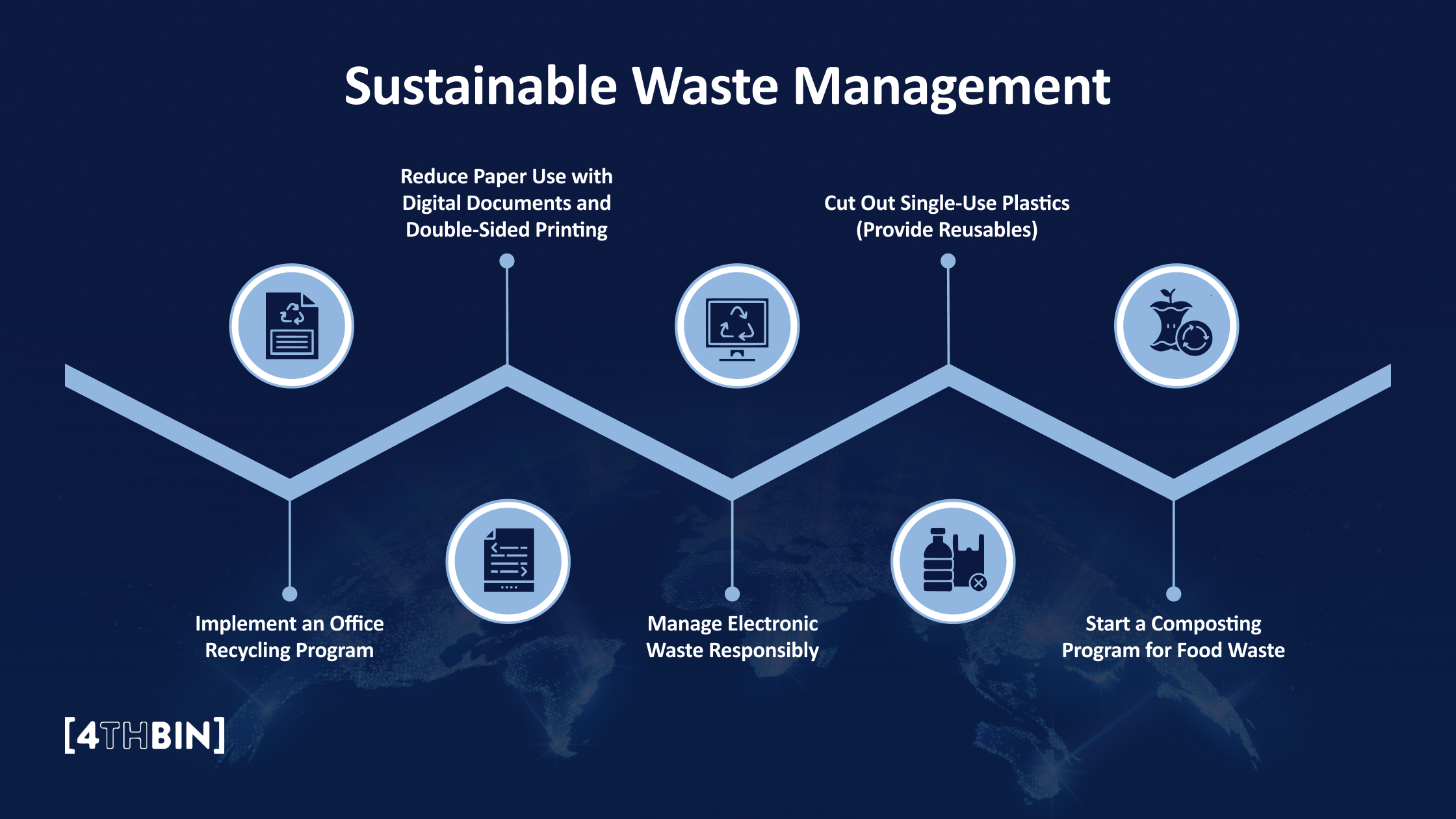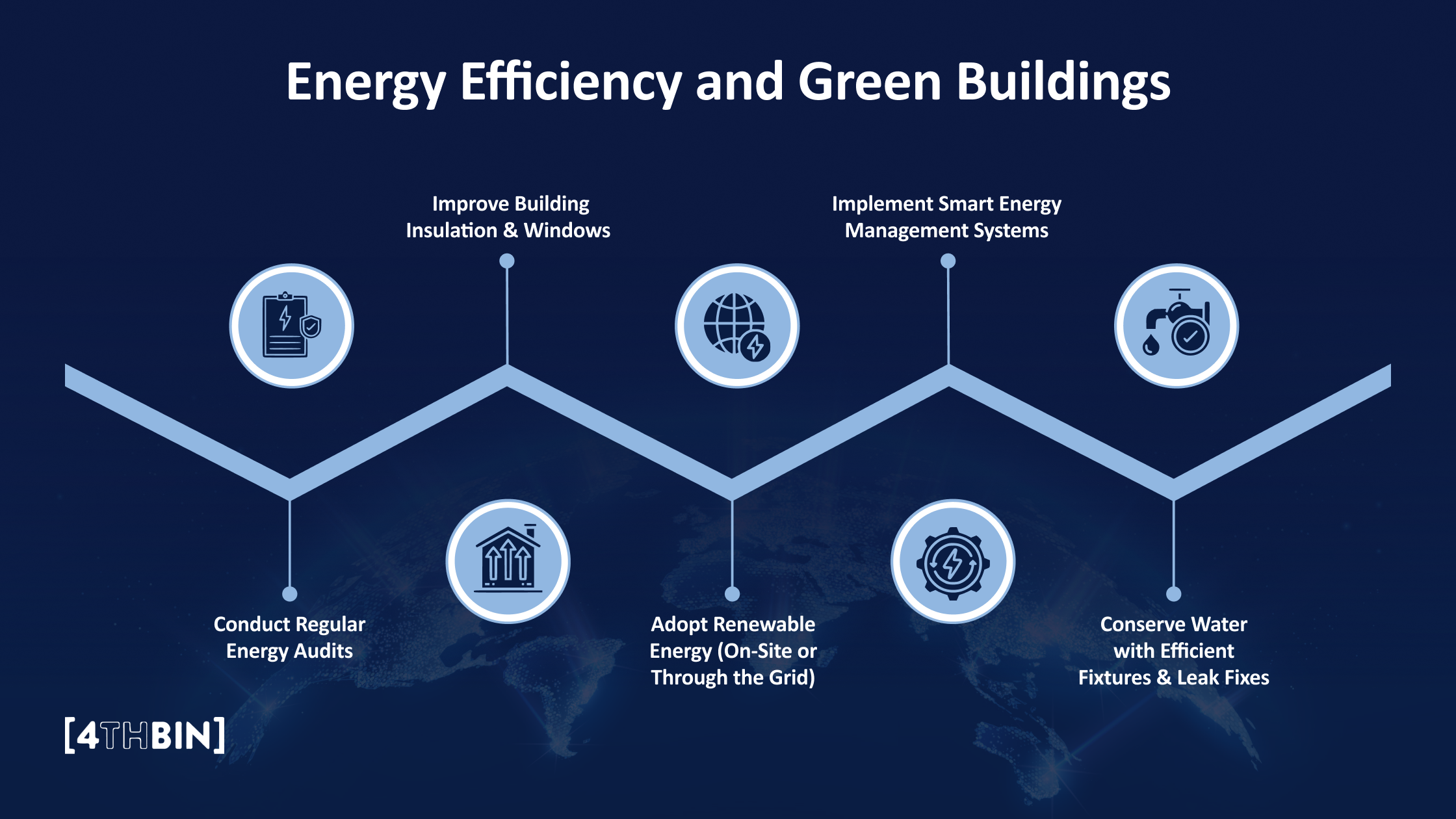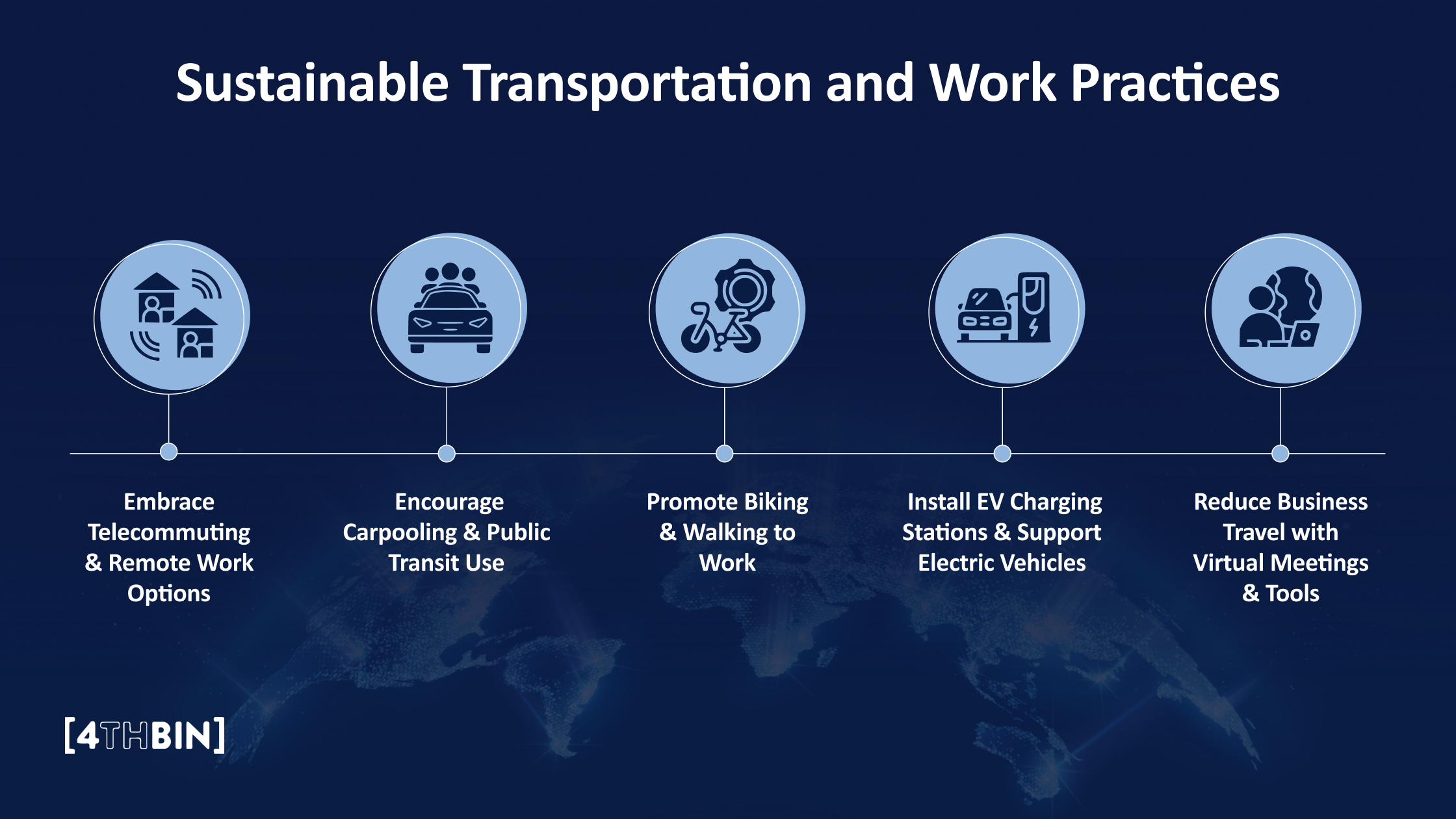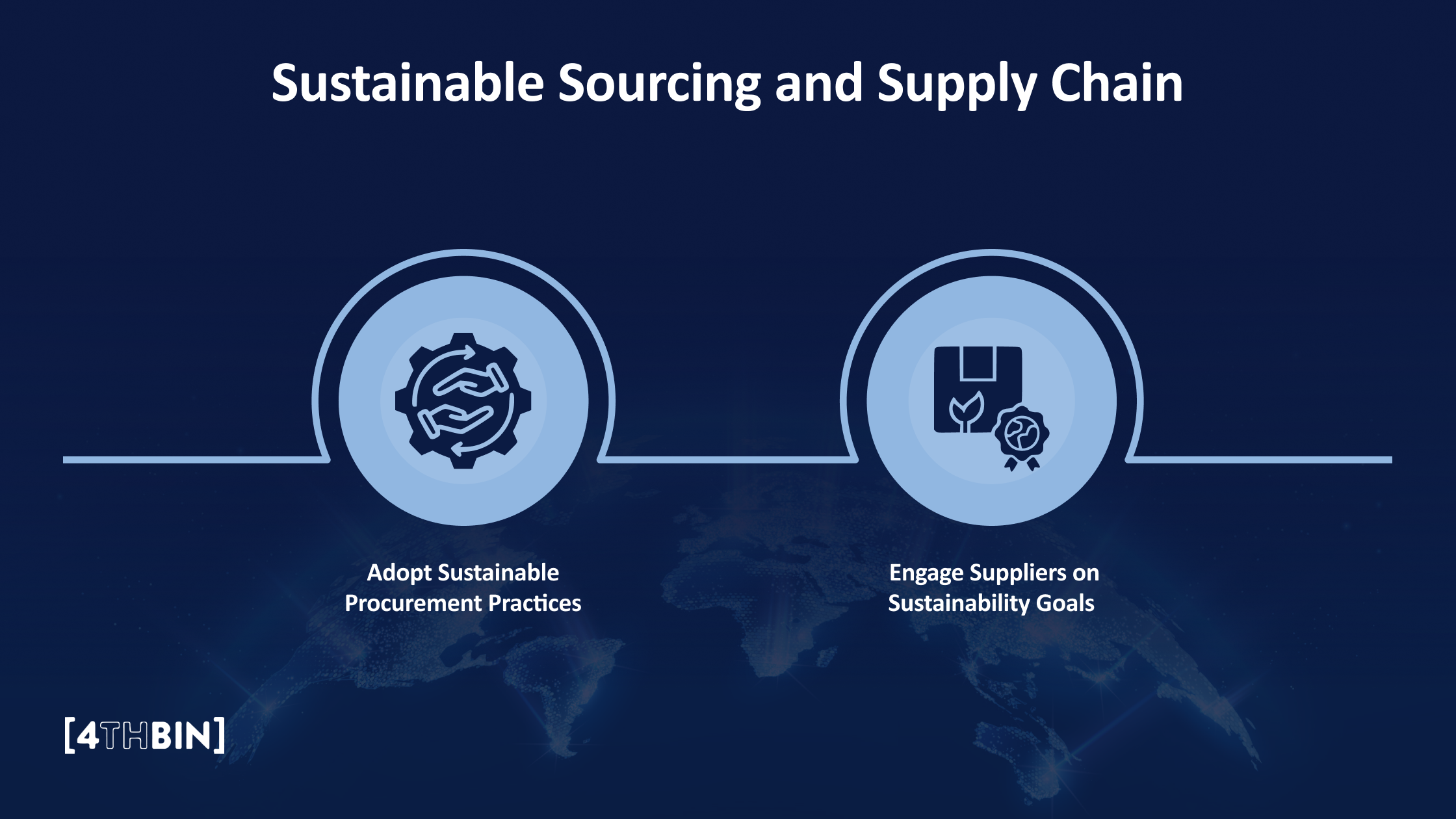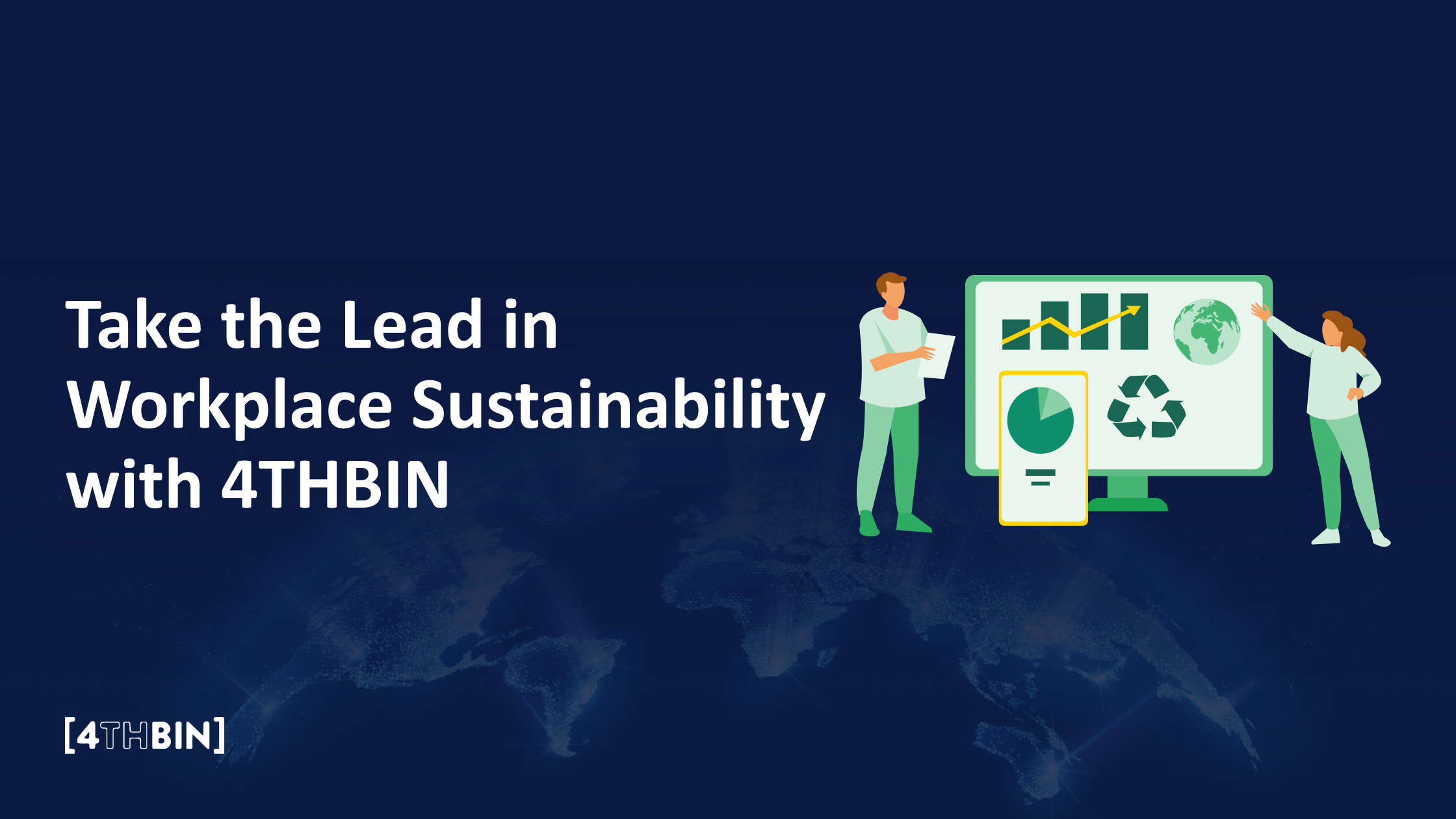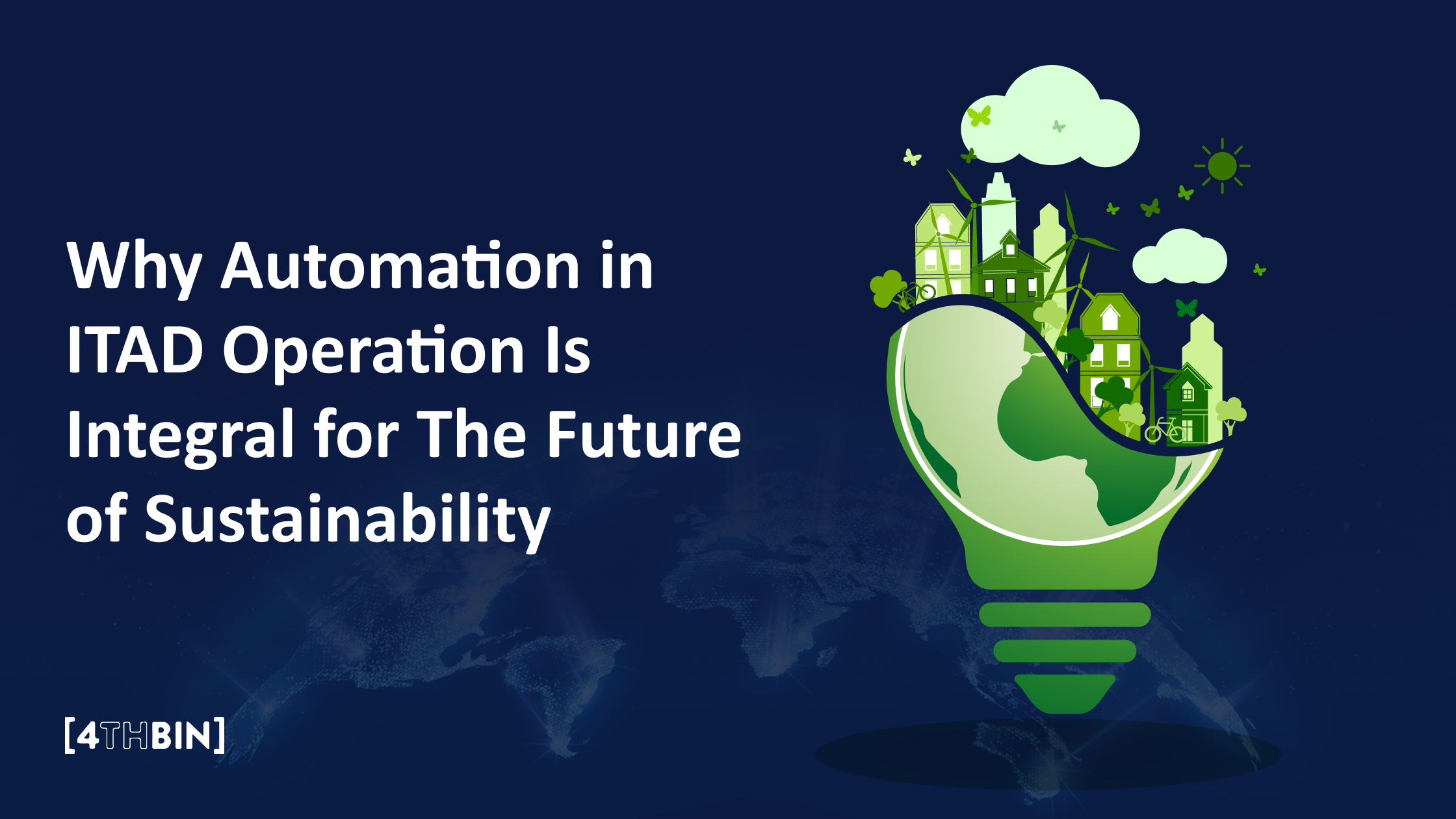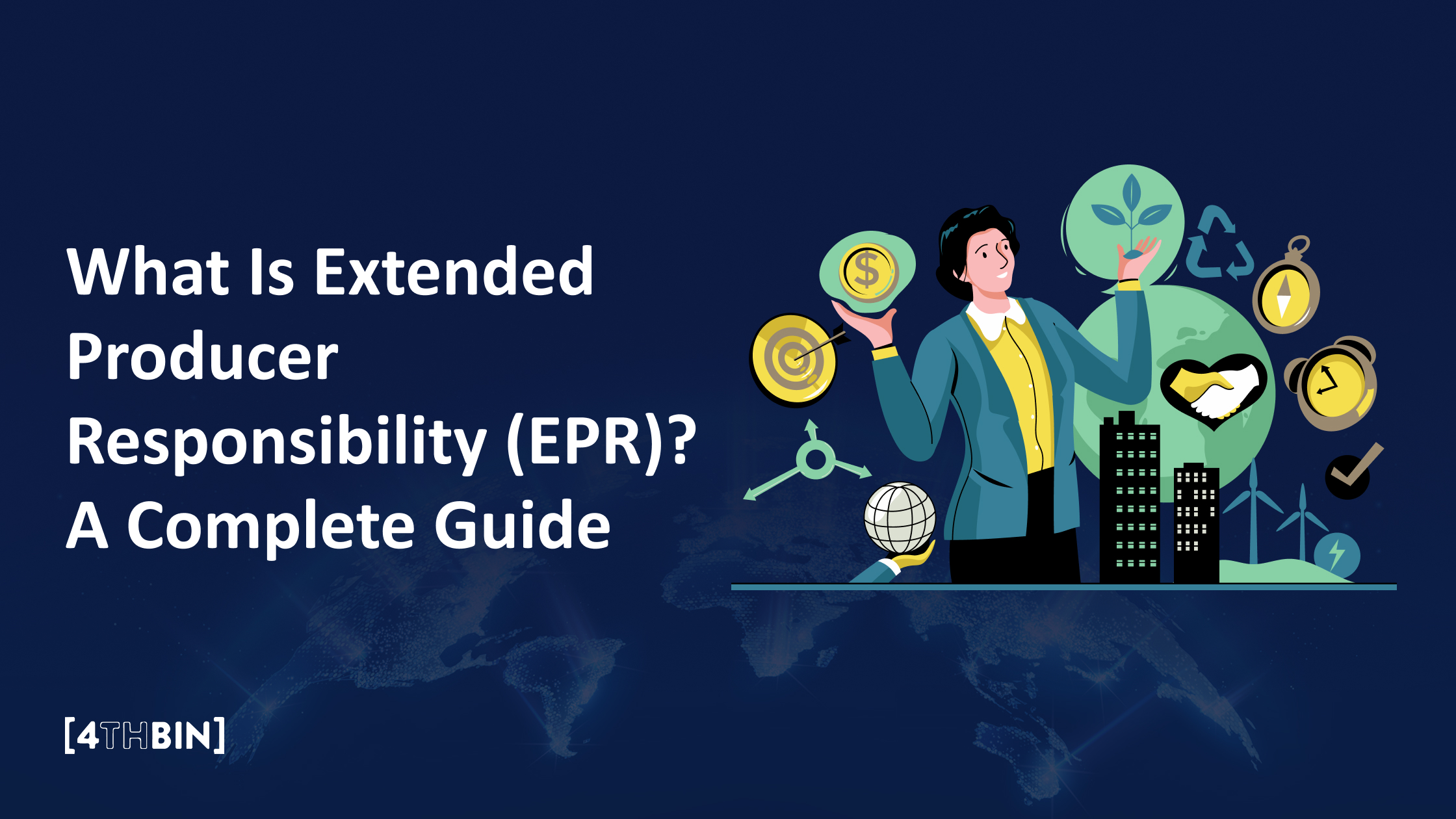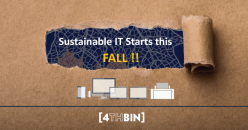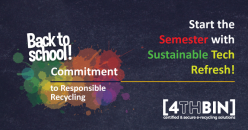28 Easy Ways to Enhance Sustainability in the Workplace
Many workplaces today are embracing visible green initiatives—encouraging the use of reusable coffee cups, installing pedal-powered charging stations, and even setting up in-house composting systems. These are positive, much-needed steps in the right direction.
But while large sustainability projects often get the spotlight, it’s the smaller, day-to-day decisions that can quietly make or break a company’s environmental progress.
Consider the amount of paper still used daily, or the outdated electronics sitting in drawers after each upgrade. When overlooked, these seemingly minor habits can quietly erode the very impact those larger initiatives aim to create.
Sustainability in the workplace isn’t just about helping the planet (though, of course, that’s huge). It’s also about building smarter operations, saving money where possible, and creating a workplace where people feel proud to be part of. The potential here is massive.
According to the U.S. Environmental Protection Agency (EPA), about 75% of the waste generated in offices is recyclable, yet only 30% of it is recycled. That’s a gap worth closing and a chance to lead by example.
So, whether you’re running a company, part of a green team, or just looking to do your part, we’ve put together 28 practical tips to make our offices more sustainable. Each one comes with clear actions, explains how it benefits both the environment and business operations, and includes real stats to show the real-world impact. Let’s get into it and make every step count.
Sustainable Waste Management
1. Implement an Office Recycling Program
Set up clearly labeled bins for paper, plastic, and metal in convenient locations, and train employees on how to sort correctly. This can divert a considerable portion of your trash from landfills and even reduce waste hauling costs.
The EPA estimates that up to 90% of waste produced in U.S. offices is recyclable. A consistent recycling program taps into this potential, cutting disposal fees and environmental impact at the same time.
2. Reduce Paper Use with Digital Documents and Double-Sided Printing
Encourage a “think before you print!” policy at your workplace and use digital file sharing and e-signatures to reduce paper use. When printing is necessary, set defaults to double-sided (duplex) to cut paper consumption.
The average office worker uses roughly 10,000 sheets of copy paper per year, much of which is wasted – nearly half of all printed documents are discarded within a day. Going paper-light saves trees and lowers costs for paper and toner, while also reducing clutter.
3. Manage Electronic Waste Responsibly
Establish an e-waste recycling or IT asset take-back program to dispose of old computers, batteries, and electronics through certified recyclers. This prevents toxic materials, such as lead or mercury, from ending up in landfills and allows valuable metals to be recycled. It’s an area of significant opportunity, since less than 25% of U.S. electronic waste is recycled. This means that most companies can drastically improve by simply partnering with e-waste recyclers or donating usable devices. Proper e-waste handling also protects data security and can even yield rebates or resale value for retired equipment.
4. Cut Out Single-Use Plastics (Provide Reusables)
Let’s talk about one of the most overlooked habits in the workplace: disposable cups! Grabbing a coffee in a paper cup or sipping from a plastic water bottle might feel routine, but these habits come with a hefty environmental price tag. Americans throw away over 50 billion disposable coffee cups each year, and most of them never get recycled.
In an office setting, this kind of waste adds up quickly across teams and departments. A simple fix? Replace disposables with reusable or refillable options. Set up water coolers or filtered stations to encourage bottle refills, and consider giving employees company-branded mugs or stainless-steel bottles.
Not only does this reduce your waste output and lower hauling costs, but it also shows clients and staff alike that your workplace genuinely values sustainability. Small actions like this help build a greener culture from the ground up.
5. Start a Composting Program for Food Waste
In offices with break rooms or cafeterias, composting is a simple way to make a significant environmental difference. Instead of tossing food scraps, coffee grounds, and paper towels into the trash, collect them for composting to keep organic waste out of landfills, where it generates methane, a potent greenhouse gas. In the U.S., an estimated 30–40% of the food supply—about 133 billion pounds—is wasted annually, according to the USDA (FDA.gov). Food is also the largest contributor to municipal landfill waste, making up 24% of all landfill material. Composting helps reduce these emissions while producing nutrient-rich material that can be used for office landscaping or donated to local gardens. It also has practical benefits, lowering trash volume and potentially reducing garbage collection fees, especially under weight-based pricing.
Green Technology and Equipment
6. Upgrade to Energy-Efficient Lighting
Replace old incandescent or fluorescent bulbs with LED lighting throughout the office. LEDs use drastically less electricity and last much longer, reducing both energy bills and the cost of bulb replacements.
According to the Department of Energy, LED bulbs use at least 75% less energy and last up to 25 times longer than traditional incandescent bulbs. This means significant savings on your electric bill and a cooler, well-lit workspace, since LEDs emit less heat. Many offices see the investment in LEDs pay for itself within a couple of years through reduced energy costs.
7. Install Motion Sensors & Timers for Office Lights
In areas like conference rooms, restrooms, and storage areas that are not continuously occupied, use occupancy sensors or automatic timers to turn off the lights when not in use. This prevents energy waste from lights being left on overnight or in empty rooms.
Studies show these motion-activated lighting controls can cut lighting energy use by around 30% on average. The result is lower electricity costs and fewer bulb burn-outs. It’s a relatively quick retrofit that improves efficiency without relying on people to remember the light switch every time.
8. Choose ENERGY STAR Certified Office Equipment
When upgrading office equipment—whether it’s computers, monitors, printers, or even kitchen appliances—look for ENERGY STAR® certified models. These devices are built to use significantly less energy without compromising performance. Depending on usage, an ENERGY STAR desktop computer can consume up to 40% less energy than a standard model. That translates to noticeable savings on your electricity bills over time, especially across multiple workstations.
Energy-efficient equipment also tends to run cooler, which extends its lifespan and boosts reliability. Plus, making sustainability-conscious purchases shows both employees and clients that your company is serious about reducing its environmental footprint, right down to the devices you choose.
9. Enable Power Management & Turn Off Devices After Hours
Configure computers, monitors, and other electronics to enter sleep or hibernate mode when not in use, and encourage employees to shut down their workstations at the end of the day. Also consider smart power strips that cut power to peripheral devices, such as printers or speakers, when the primary device (like a PC) is off. The impact adds up: simply keeping power-saving settings active can reduce a computer’s energy use by up to 27% annually, according to the Department of Energy guidance.
For a fleet of PCs and monitors, that can mean thousands of dollars saved each year in electricity. Plus, powering down equipment reduces wear and tear, potentially extending its lifespan.
10. Optimize HVAC Settings & Maintenance
Heating, ventilation, and air conditioning systems are notorious energy hogs in offices – making smart adjustments here can yield big wins. Use programmable or smart thermostats to automatically adjust temperatures during off-hours (e.g., let the office get warmer after everyone leaves in summer, or cooler in winter nights). Even a 1–2°F tweak can noticeably cut energy use without sacrificing comfort. HVAC is often the most extensive source of energy use in commercial buildings. On average, about 44% of on-site energy consumption is used for heating, cooling, and ventilation.
Moreover, regular maintenance, such as cleaning filters, sealing duct leaks, and tuning boilers, keeps systems running efficiently, which lowers utility bills and improves indoor air quality for staff comfort. These optimizations save money on heating and cooling and significantly reduce the office’s carbon footprint.
11. Virtualize Servers & Use Cloud Computing
For tech-heavy workplaces running on-site servers, consider virtualization or migrating to energy-efficient cloud services. Virtualization allows you to run multiple “virtual” servers on a single physical machine, significantly reducing the number of servers needed. This slashes electricity and cooling demand in your server room.
Data center studies find that consolidating servers through virtualization can reduce data center energy use by 10% to as much as 40%. Not only does this save on power costs, but it also frees up office space and cuts hardware expenses (fewer servers to buy and replace). Likewise, many cloud providers operate highly optimized data centers powered by renewable energy, so shifting workloads to the cloud can further shrink your IT carbon footprint.
12. Extend Device Lifecycles & Embrace Refurbished Tech
Resist the urge to upgrade office gadgets and company phones every year—extending the life of electronics is one of the most effective ways to reduce your environmental impact. It delays the need for new manufacturing, conserves resources, and reduces e-waste. When hardware upgrades are necessary, consider choosing quality refurbished devices. Furthermore, opting for refurbished equipment can avoid extracting 180.7 lbs of raw materials and prevent emitting 55.11 lbs of greenhouse gases per year. That’s a substantial environmental win without sacrificing performance, as many refurbished laptops and phones function like new and come with warranties.
Financially, this approach also reduces tech spending while supporting sustainable procurement. Just be sure to securely erase data from old devices, then donate or resell them instead of sending them to the landfill.
Energy Efficiency and Green Buildings
13. Conduct Regular Energy Audits
Bring in a professional or use free utility company audit programs to assess where your office is wasting energy, from leaky windows to inefficient equipment schedules. An energy audit will identify cost-effective measures, such as upgrading insulation, tuning HVAC systems, or optimizing lighting layouts. Acting on audit recommendations can yield huge savings: on average, audits uncover potential utility bill reductions of 10–40% for commercial buildings.
Many fixes, like weather-stripping doors or recalibrating thermostats, are inexpensive and pay back quickly. By systematically finding and fixing energy leaks, you’ll lower operating costs and create a more comfortable workspace.
14. Improve Building Insulation & Windows
Don’t overlook the building envelope’s sound insulation in walls and ceilings, along with energy-efficient windows, which help maintain indoor temperatures with less heating and cooling. If your office has older single-pane windows, upgrading to double-pane windows or adding window film can reduce heat loss in winter and heat gain in summer. These improvements reduce strain on your HVAC.
For example, LEED-certified green buildings (which often feature better insulation and windows) use about 25% less energy and emit 34% less CO₂ on average, according to the U.S. Green Building Council Impact Report. While building upgrades involve an upfront investment, they result in significant reductions in utility bills. They can even increase property value and employee comfort, with fewer drafts or hot spots in the office. Consider pursuing certifications like LEED or ENERGY STAR for your building as a framework to drive such upgrades.
15. Adopt Renewable Energy (On-Site or Through the Grid)
Powering your operations with renewable energy is a smart step toward sustainability. Installing solar panels—even a modest rooftop array—can offset electricity use and protect against rising utility rates. With solar costs down over 80% since 2010, installations are more affordable and often eligible for tax incentives. If on-site generation isn’t an option, consider joining a utility green power program or purchasing renewable energy credits. Switching to clean energy reduces your carbon footprint and sends a strong message to employees and customers about your commitment to the planet.
16. Implement Smart Energy Management Systems
Smart thermostats, sensors, and energy management software help monitor and reduce energy usage in real-time. These solutions adjust HVAC and lighting based on occupancy and schedules, ensuring systems only run when needed.
Even simple automation can deliver double-digit energy savings, lowering both utility costs and carbon emissions. Plus, real-time data dashboards help track performance and guide future sustainability decisions.
Here’s how to get started:
- Install smart thermostats to automate heating and cooling schedules.
- Use occupancy sensors in meeting rooms and shared areas to control lights and HVAC systems.
- Implement energy management software to monitor usage and set efficiency benchmarks.
- Review energy reports regularly to identify inefficiencies and track the return on investment (ROI) from upgrades.
17. Conserve Water with Efficient Fixtures & Leak Fixes
Sustainability isn’t just about energy—water matters too. Install WaterSense-labeled low-flow faucets, dual-flush toilets, and efficient urinals to reduce water use by 20–55%, as proven in tropical building case studies. These upgrades cut costs, ease municipal demand, and support green certifications, without compromising function.
Fix leaks fast: one drip per second can waste over 3,000 gallons a year. Simple fixes like aerators and leak repairs are low-cost, and many utilities offer rebates. Smarter water use builds long-term savings and resiliency, especially in drought-prone regions.
Sustainable Transportation and Work Practices
18. Embrace Telecommuting & Remote Work Options
Remote work is an impactful climate strategy. Letting employees work from home 2–4 days a week can cut their carbon footprint by up to 29%, with full-time remote work slashing it by 54%. It also reduces office energy use, commuting emissions, and overhead costs, while expanding your talent pool and boosting employee satisfaction. To make it effective, invest in strong IT systems and prioritize clear communication.
19. Encourage Carpooling & Public Transit Use
For days when employees do come to the office, incentivize greener commuting options. You can set up a carpool matching program or offer preferred parking for carpool vehicles, provide transit pass subsidies, or join initiatives like “Guaranteed Ride Home” programs to support transit riders. Carpooling, even just with one other person, cuts the fuel (and emissions) per commuter in half. Sharing a ride with one colleague can eliminate about 2,000 pounds of CO₂ per year for each of you.
Using public transit typically emits far less per mile than single-occupancy cars, and saves employees fuel and parking costs. Many U.S. cities allow employers to offer pretax payroll deductions for transit expenses, effectively reducing the cost of bus or train passes. By making sustainable commuting easy, you’ll reduce your team’s collective carbon footprint and possibly alleviate parking shortages at the office.
20. Promote Biking & Walking to Work
Create a bike-friendly workplace to encourage active, zero-emission commutes. This includes installing secure bike racks, offering showers and changing rooms for cyclists, and providing incentives such as small bonuses or extra wellness time for those who bike or walk to work. Active commuting is a win-win: it produces no direct emissions and offers health benefits for employees, leading to potential healthcare savings and improved productivity.
Even a few people switching can make a difference – choosing to bike or walk for some trips can reduce an average household’s carbon footprint by up to 1,000 pounds of CO₂ per year. Consider organizing an occasional “Bike to Work Day” or joining local challenges; the camaraderie and perks can motivate more folks to give it a try. Healthier, happier employees and a cleaner atmosphere are the payoffs.
21. Install EV Charging Stations & Support Electric Vehicles
Support clean commuting with EV charging. Installing a few workplace EV chargers, often eligible for grants, can ease range anxiety, offer employees low-cost fuel, and promote the adoption of electric vehicles. EVs cut emissions by about 66% compared to gas cars (3,932 lbs vs. 11,435 lbs CO₂/year on average). It’s a smart sustainability move that aligns with clean tech goals, attracts eco-conscious talent, and pairs well with on-site solar for truly green charging.
22. Reduce Business Travel with Virtual Meetings & Tools
Reassess how often business travel is essential. Many meetings and training can be handled just as effectively through video conferencing, webinars, or virtual platforms. During the pandemic, shifting to virtual formats reduced carbon footprints by an average of 94%. Reducing trips also lowers costs for flights, hotels, and meals, and saves time that would otherwise be lost in transit.
While some travel is unavoidable, adopting a “virtual first” approach for routine interactions can make a big difference. When travel is required, bundle meetings and opt for rail or low-carbon options when possible. It’s a win for both sustainability goals and your bottom line.
Sustainable Sourcing and Supply Chain
23. Adopt Sustainable Procurement Practices
Integrate environmental criteria into your purchasing decisions for office supplies, furniture, and vendor services. Choose products that are recycled, biodegradable, or energy-efficient, and work with suppliers who prioritize sustainability. For instance, recycled office paper uses 74% less energy and causes 35% less water pollution than virgin paper, while also saving 17 trees and 7,000 gallons of water per ton. Recycled toner cartridges and remanufactured furniture are other innovative, low-impact options.
Moreover, buying in bulk also reduces packaging waste and can cut costs. Formalizing a green procurement policy ensures consistent choices and signals to suppliers that sustainability is a priority. This not only shrinks your footprint but also encourages broader change across your supply chain.
24. Engage Suppliers on Sustainability Goals
Your company’s environmental impact includes the practices of your suppliers, as well as your operations. Collaborate with key vendors to reduce waste, use responsible materials, and lower emissions. This can mean minimizing packaging, sourcing locally to cut transportation emissions, or choosing suppliers with sustainability certifications.
Supply chain emissions average 11.4 times higher than direct operational emissions, making them a significant contributor to your carbon footprint. Collaborating with suppliers to reduce these emissions magnifies your sustainability efforts. Many companies now embed green criteria into RFPs and vendor scorecards—driving efficiency, resilience, and stronger compliance as environmental regulations evolve.
Employee Engagement and Climate Commitments
25. Create a Green Team or Sustainability Committee
Empower employees by creating a cross-functional green team to lead your company’s sustainability efforts. This group can organize recycling drives, energy-saving challenges, and awareness campaigns, while also serving as a hub for fresh ideas. When employees take ownership of green initiatives, engagement rises; studies show a 16% boost in morale at companies with strong sustainability values.
These teams can also plan volunteer events, such as tree planting or cleanups, which help strengthen the company’s culture and purpose. Beyond team spirit, they also bring practical benefits—employees often spot inefficiencies that others overlook, leading to real savings and improvements.
A dedicated green team keeps momentum going, ensuring sustainability stays a company-wide priority. Plus, it sends a clear message that your organization walks the talk when it comes to environmental responsibility.
26. Educate & Involve Employees in Sustainable Practices
Embed sustainability into your company culture with training, regular reminders, and recognition. Start with onboarding—cover recycling, energy-saving, and green policies—then reinforce it through lunch-and-learns and fun challenges, such as biking to work or reducing paper use.
Furthermore, when employees understand the “why,” they are more engaged, over 55% of workers research a company’s environmental stance before accepting a job, and 40% have considered leaving due to climate concerns. Involving staff helps cut waste and energy use, boosts morale, and attracts eco-conscious talent. A well-informed, empowered team is key to driving lasting change.
27. Set Clear Sustainability Goals & Track Progress
Just as businesses set financial targets, set environmental performance targets – for example, “reduce office energy use by 20% in two years” or “achieve zero waste-to-landfill by 2025.” Emphasize aligning goals with broader frameworks (e.g., science-based targets), assign ownership, and track key metrics like energy and waste.
Report progress annually to both leadership and staff. Public commitments build accountability—over 4,200 companies had science-based emissions targets validated by the end of 2023. Tracking helps celebrate wins, identify gaps, and justify green investments. Most importantly, clear goals rally teams around a shared mission and embed sustainability in everyday decisions.
28. Utilize Carbon Offsets for Unavoidable Emissions
Once you’ve minimized direct emissions, offset the remaining ones by investing in verified carbon offset projects, such as reforestation, renewable energy, or methane capture. These help neutralize unavoidable emissions (e.g., from travel or data centers) and support your path to carbon neutrality. About two-thirds of the world’s largest companies with net-zero goals plan to use offsets.
Moreover, use trusted standards, such as the Gold Standard or VCS, to ensure the quality of your offsets. Offsets aren’t a free pass to pollute, but they’re a cost-effective way to meet climate commitments and appeal to eco-conscious clients. Many companies treat offset costs as an internal “carbon price” in budgeting. Combined with direct reductions, offsets can help bring your net emissions to zero.
Sustainability at work is achievable and rewarding!
From energy upgrades to green procurement and employee engagement, small steps can cut emissions, save money, and elevate your brand. As momentum builds, it fosters a culture of innovation and accountability. Start small, scale steadily, and shape a workplace that meets rising climate expectations. It’s a win-win: a healthier planet and a resilient, future-ready business.
To go further, consider solutions like 4THBIN’s certified e-recycling services, which help reduce the environmental harm of electronic waste by safely disposing of outdated tech. Let’s check out how they do it.
Take the Lead in Workplace Sustainability with 4THBIN
Sustainability in the workplace includes how you manage aging and unused technology. At 4THBIN, we provide secure and environmentally responsible e-recycling solutions that help businesses reduce waste and support greener operations. From scheduled on-site pickups to flexible return options, we make it simple to transform tech waste into meaningful environmental progress.
Our comprehensive services include electronics recycling, secure data destruction, data center decommissioning, IT asset disposition and recovery, office relocation, SmartBin technology, and customized solutions for Medtech and subscription-based needs.
With over a decade of experience and more than 10,000 clients from startups to Fortune 100 companies, we ensure full compliance, protect sensitive data, and help keep hazardous materials out of landfills. Helping our partners build cleaner, more responsible workplaces is what drives us, and we’re just getting started.


